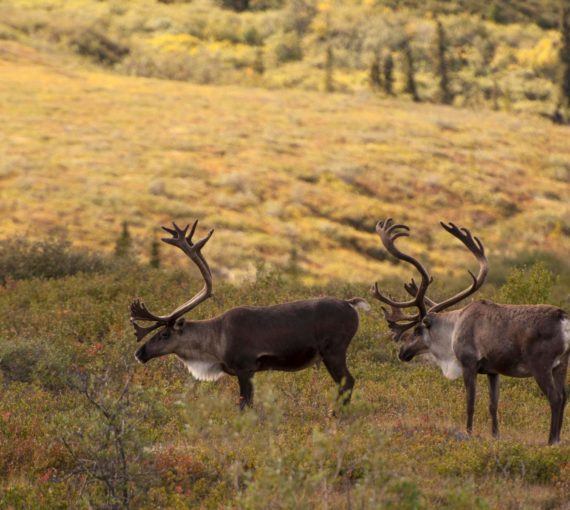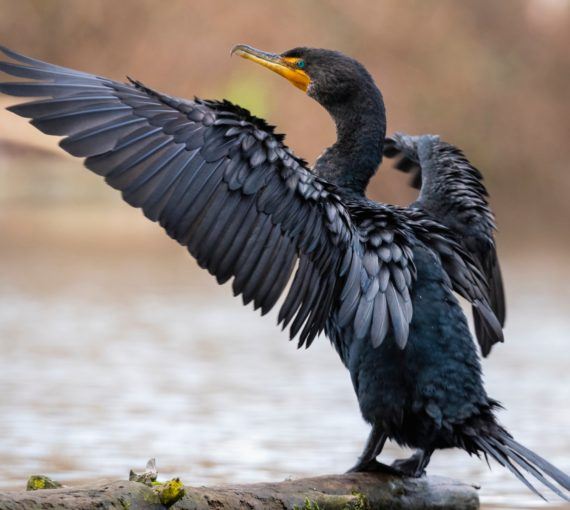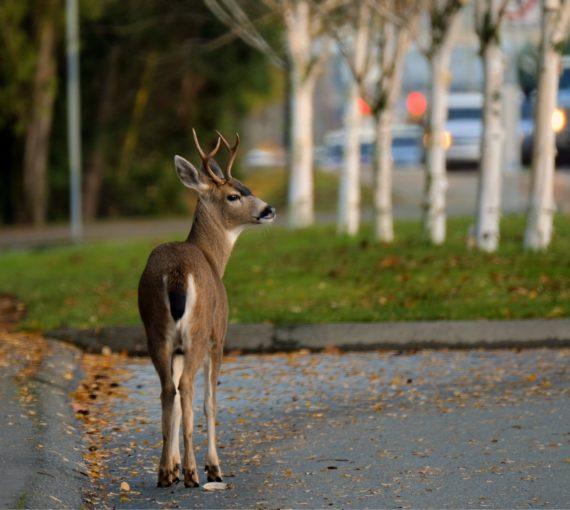The boreal forest and the lives it supports are at risk
Stretching from Yukon to Newfoundland and Labrador, the boreal forest makes up 55 per cent of Canada’s land mass. It is home to hundreds of Indigenous communities, 300 bird species and the iconic woodland caribou. That home is now at risk due to resource extraction, which is fracturing the land. Almost three-quarters of Canada’s boreal woodland caribou herds are not self-sustaining, meaning they need rapid conservation interventions to survive.
Caribou are heading toward extinction, and we must act now. Governments must fulfil their obligations to ensure a minimum of 65 per cent of caribou habitat is protected and restored to help them survive.
The boreal forest is the backbone of Canada.
We cannot stand without it.Rachel Plotkin, Ontario Science Campaigns Manager
Tell Canada it’s time to take action for caribou
Boreal woodland caribou are threatened with extinction in Canada. Sign the petition to protect and restore a minimum of 65 per cent of caribou habitat today.
Wildlife in the boreal forest
The boreal forest spans 1.9 billion hectares and represents 14 per cent of Earth’s land. It is home to a rich diversity of wildlife.
85 species of mammals
Caribou, moose, wolves and more live in the boreal forest.
300 bird species
At least three-billion birds breed in the boreal forest each year, including woodpeckers, finches, owls and ravens.
20 tree species
These trees store large amounts of carbon. In summer, when the boreal forest grows most, global CO2 levels drop.
32,000 insect species
From pollinators to decomposers to consumers, insects like the ladybug help keep the forest thriving.
130 species of fish
The boreal is home to all sizes of fish, from minnows to pike, trout, burbot and more. Depending on the season, many fish migrate to survive.
Reptiles and amphibians
During hibernation, more than 40 per cent of some frogs’ body fluids can consist of ice.
Leading the charge: Indigenous communities are on the front lines of conservation
Seventy per cent of Canada’s Indigenous communities are in forested areas. This includes more than 600 First Nations, Inuit and Métis communities whose traditional territories are in the boreal. Their spiritual and economic relationship with the boreal forest — and often with caribou — runs deep. In the absence of sufficient government action, many communities are leading the fight for conservation.
Many Indigenous communities are taking a leadership role in protecting places that are essential to them and securing spaces where they can actively practise Indigenous ways of life. For instance, Indigenous Protected and Conserved Areas are developed, declared and covered or co-governed by Indigenous communities.
The David Suzuki Foundation works to support Indigenous communities by amplifying their voices, providing capacity support and collaborating on conservation initiatives.
Indigenous protected and conserved areas
The boreal forest is culturally and economically significant to hundreds of Indigenous communities that call it home.
Establishing Indigenous-led protected and conserved areas is one way in which Indigenous communities are reclaiming what they see as their deep-rooted relationship to the land. Indigenous protected and conserved areas are envisioned, declared and governed or co-governed by Indigenous peoples.
To learn more, here is a background paper on the regulatory landscape for IPCAs in Ontario, developed by the Canadian Environmental Law Association (commissioned by the David Suzuki Foundation) and presented at a webinar for Ontario First Nations on June 10, 2020.
Threats to the boreal forest
Industrial development without limits is putting the future of the boreal forest — and all the lives within it — at risk.
Logging
Between 1990 and 2008, 46 million acres of forest were harvested, 65 per cent of which came from the boreal forest. Logging limits are needed to ensure critical habitat is protected.
Mining
More than 7,000 abandoned mines are scattered throughout the forest, some still leaking into nearby waterways.
Oil and gas
More than 155,000 active and 117,000 abandoned gas wells are found throughout the boreal forest, 87 of which are close to lakes or rivers.
Hydro
Large dams have affected more than 130,000 kilometres of rivers within the boreal forest, while more than 52,000 square kilometres of land habitat has been lost to flooding from dams.
Caribou and the boreal: An indicator of mutual health
Boreal caribou are an umbrella species. When you protect caribou habitat, you’re ensuring the survival of a large number of other wildlife. You’re also ensuring cleaner air and water, since a healthy boreal ecosystem means more carbon absorption and water filtration. So, when caribou are doing well, the forests are doing well.
But caribou aren’t doing well. They’re currently listed as “threatened” with extinction under the federal Species at Risk Act. In the 2012 boreal caribou recovery strategy, provinces and territories were given five years — until 2017 — to develop plans to protect and restore at least 65 per cent of the range of each caribou herd. This would give the herds only a 60 per cent chance of survival. Even that hasn’t been done. The 2017 deadline came and went without a single province implementing a caribou range plan. Boreal caribou are on a path to extinction.
The David Suzuki Foundation is working to demonstrate that there is room for both industry and ecological conservation, but only if urgent action is taken today.
Caribou on the brink
30%
of woodland caribou have disappeared over the last 20 years.
75%
of remaining herds will not survive without human intervention.
65%
of caribou habitat is legally required to be protected and restored at a minimum.
Head inside the boreal forest to see caribou life
Explore the beautiful boreal forest, the threatened caribou that live there and how industrial activity has influenced their population decline.
Room for both: Healthy economies and caribou populations go hand in hand
Protecting the environment is often portrayed as being at the expense of industry, growth and profit. However, this argument is often exaggerated and used as a scare tactic. Scholars have recently identified that some industry players use the same tactics as climate change deniers to stall or prevent caribou conservation. Yet there are many places where caribou conservation and industrial activity can go hand in hand, and some instances where tough decisions will have to be made. Further, conservation can be good for industrial activity if it increases access to the green market. FSC certification, which has caribou habitat conservation criteria, is one good example of this.
Expert views
Ice cream, nail polish and… tree pulp?
As Ontarians have been consumed with the COVID pandemic, the provincial government has stealthily moved forward with an environmental-deregulation agenda, furthered in recent weeks by the release of what it has dubbed Ontario’s Sustainable Growth Forest Sector Strategy.
Boreal Project Manager
Wood surplus shows there’s room for the forestry industry and caribou
Despite industry’s long-standing claim that protecting critical caribou habitat is incompatible with a healthy forestry sector, it has finally recognized there isn’t a shortage of wood.
Boreal Project Manager
The B.C. government is taking a double-standard approach to caribou
A partnership agreement with West Moberly and Saulteau First Nations tackles the problems that caribou face in their specific area, but an agreement between the federal and provincial governments shows B.C. is willing to let the status quo stand for the rest of the province’s southern mountain caribou populations.
Boreal Project Manager



